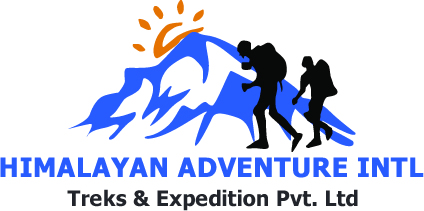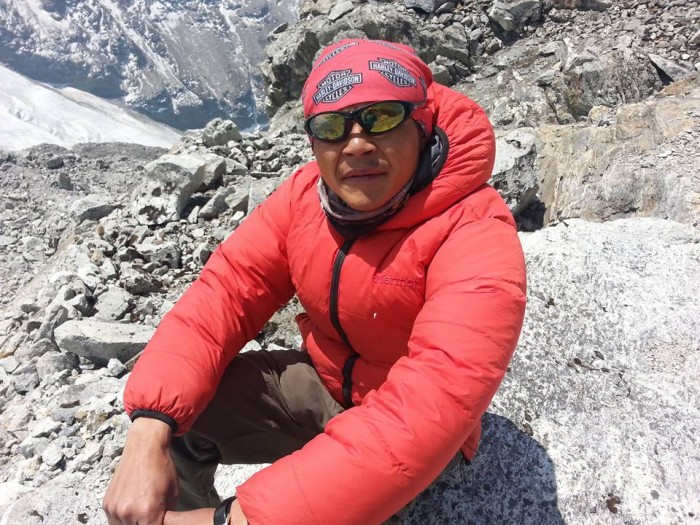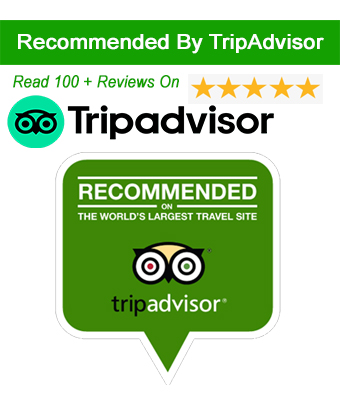The Gokyo Lake Trek is one of Nepal’s most scenic and less-traveled adventures in the Everest region. Unlike the classic Everest Base Camp (EBC) trail, the Gokyo route offers spectacular views of glittering turquoise lakes, glacier moraines, and panoramic Himalayan vistas without the heavy foot traffic. The trek’s highlight is the ascent of Gokyo Ri, offering a stunning view of four 8,000-meter peaks, including Everest, Lhotse, Makalu, and Cho Oyu.
For those looking for a bit more challenge, the Gokyo Renjo La Pass trek introduces high-altitude adventure over Renjo La Pass (5,360 meters) — one of the famed Three Passes of the Everest region, the others being Cho La and Kongma La. This trek perfectly blends breathtaking nature with cultural immersion in the Sherpa heartland.
Why Choose the Gokyo Lake Trek?
While the Everest Base Camp remains the most popular route, the Gokyo Lake Trek offers unique perks:
-
Less crowded trail
-
Breathtaking Gokyo Lakes (a series of six glacial lakes)
-
Climb to Gokyo Ri (5,360 meters) — one of the finest viewpoints in the Himalayas
-
Cross Renjo La Pass for an exhilarating challenge
-
Opportunity to combine the trek with EBC or Island Peak via the Three Passes and Island Peak route
Whether you're a first-time trekker in Nepal or a seasoned adventurer, this trail leaves you with memories for a lifetime.
Gokyo Lake Trek Highlights
-
Gokyo altitude: 4,790 meters
-
Renjo La Pass altitude: 5,360 meters
-
Cho La Pass altitude: 5,420 meters (for those extending the trek)
-
Gokyo to Lungden distance: ~8 km
-
Lungden to Namche distance: ~18 km
-
Best seasons: March to May & September to November
-
Trek duration: 12 to 18 days depending on route
Gokyo Renjo La Pass Trek Itinerary
Below is a standard Renjo La Pass trek itinerary for trekkers seeking a scenic and moderately challenging route:
Day 1: Arrival in Kathmandu (1,400m)
You’ll be welcomed by a representative from Himalayan Adventure International Treks and transferred to your hotel. Briefing and last-minute preparations.
Day 2: Fly to Lukla (2,840m) & Trek to Phakding (2,610m)
A scenic 35-minute flight to Lukla followed by a gentle walk to Phakding through alpine forests and Sherpa villages.
Day 3: Phakding to Namche Bazaar (3,440m)
Trek along the Dudh Koshi River, crossing several suspension bridges, and enter Sagarmatha National Park before reaching Namche.
Day 4: Acclimatization Day in Namche
Short hike to Everest View Hotel or Khumjung Village. Acclimatization is key for crossing Renjo La Pass safely.
Day 5: Namche to Dole (4,200m)
Climb out of Namche and pass rhododendron forests and yak pastures toward Dole.
Day 6: Dole to Machhermo (4,470m)
A short but steep hike to Machhermo with increasing altitude awareness.
Day 7: Machhermo to Gokyo (4,790m)
Ascend past Ngozumpa Glacier to reach the beautiful Gokyo village. You’ll pass the first, second, and third lakes en route.
Day 8: Hike to Gokyo Ri (5,360m) & Explore Lakes
A sunrise hike to Gokyo Ri offers the finest view of Everest, Cho Oyu, and other peaks. Spend the rest of the day exploring the fourth and fifth Gokyo Lakes.
Day 9: Gokyo to Lungden via Renjo La Pass (5,360m)
One of the trek’s most adventurous days. Climb steep trails to Renjo La Pass, where you'll see Everest, Rolwaling, and Nangpa La in one panorama. Descend to Lungden.
Day 10: Lungden to Namche (3,440m)
Descend through remote Sherpa villages and enjoy a quieter side of the Everest region. (Lungden to Namche distance is around 18 km.)
Day 11: Namche to Lukla
Retrace your steps to Lukla through the Dudh Koshi Valley.
Day 12: Fly back to Kathmandu
Enjoy a final mountain flight and spend the evening in the capital.
Gokyo Ri: Is It Worth It?
Absolutely! The climb to Gokyo Ri (5,360 meters) is one of the most rewarding in the Himalayas. While the ascent is steep, it’s shorter and often less icy than Kala Patthar. From the summit, you’ll witness:
-
Everest, Lhotse, Makalu, Cho Oyu
-
Gokyo Lakes beneath you
-
Ngozumpa Glacier — Nepal’s largest glacier
So, when someone asks, "Is Gokyo Ri worth it?" — the answer is a resounding yes!
Renjo La Pass: How High Is It?
If you're wondering, "How high is Renjo La Pass?", the answer is 5,360 meters (17,585 ft). It’s slightly lower than Cho La but often considered the most scenic of the Three Passes. Despite the altitude, it is safer to cross than Cho La, especially in the post-monsoon season when the trail is clearer.
Renjo La Pass Map Overview
A typical Renjo La Pass map shows a semi-circular trail starting from Namche to Dole, Machhermo, Gokyo, crossing Renjo La, and reconnecting with the main trail at Thame or Lungden. If you're using a GPS app or trekking map, look for these segments:
This is a loop trail — ideal for trekkers wanting to avoid backtracking.
Gokyo to Lungden Distance
The Gokyo to Lungden distance via Renjo La is about 8 kilometers. While this might not seem long, the steep climb up the pass followed by the descent makes this day one of the most physically demanding.
Cho La Pass Altitude
For trekkers extending their Gokyo trek toward EBC, Cho La Pass altitude is 5,420 meters. It's a glacier-covered and rocky pass that connects Gokyo to Lobuche. It is more technical and weather-dependent compared to Renjo La.
EBC Gokyo Trek Itinerary (Extended Version)
Want the best of both worlds? Combine Gokyo with Everest Base Camp via Cho La Pass:
-
Namche → Dole → Gokyo → Gokyo Ri
-
Cross Cho La Pass → Lobuche → Everest Base Camp → Kala Patthar
-
Return via Tengboche and Namche
This EBC Gokyo trek itinerary is about 18–20 days and is one of the most scenic treks in Nepal.
Three Passes and Island Peak Combo
Ambitious trekkers often combine the Three Passes (Renjo La, Cho La, and Kongma La) with Island Peak Climbing. This 25–28 day expedition is ideal for those seeking a complete Everest adventure with trekking and peak climbing.
Highlights:
-
Cross all three major passes
-
Visit Everest Base Camp and Gokyo Lakes
-
Summit Island Peak (6,189m) for your first Himalayan climb
Trekking Costs: Gokyo & Beyond
How Much Does It Cost to Trek to Gokyo Lakes?
Here’s a breakdown of typical costs when booking with Himalayan Adventure International Treks:
| Item |
Cost (USD) |
| Kathmandu – Lukla Round Trip Flight |
$300 – $400 |
| Permits (SNP + TIMS) |
$50 – $70 |
| Guide per day |
$30 – $40 |
| Porter per day |
$20 – $25 |
| Accommodation (per night) |
$5 – $15 |
| Meals per day |
$20 – $30 |
| Total (12-day package) |
$900 – $1,300 |
You can also opt for an all-inclusive package with Himalayan Adventure International Treks, which covers permits, guide/porter, accommodation, meals, and transport.
How Much Does the Hampta Pass Trek Cost?
This question often comes up in comparison. The Hampta Pass Trek, located in Himachal Pradesh, India, typically costs $100 – $150 for a 5-day trek. It’s more budget-friendly but lacks the high-altitude grandeur of Gokyo Lakes.
Best Time to Trek Gokyo Lakes
-
Spring (March to May): Clear skies, blooming rhododendrons
-
Autumn (September to November): Stable weather, perfect for Renjo La Pass
-
Winter (December to February): Cold but clear, best for experienced trekkers
-
Monsoon (June to August): Not recommended due to rain and landslides
Accommodations and Food on the Trail
The Gokyo region has comfortable tea houses in every village. Expect twin rooms, clean beds, and basic meals like Dal Bhat, noodles, momos, and pasta. Gokyo village even offers bakeries and Wi-Fi at some lodges.
Tips for a Successful Gokyo Renjo La Trek
-
Acclimatize properly: Never skip rest days.
-
Hire a guide and porter for safety, navigation, and cultural insight.
-
Start early on Renjo La Pass day to avoid afternoon winds.
-
Travel insurance with helicopter evacuation is a must.
-
Hydrate well to prevent altitude sickness.
The Gokyo Lake Trek via Renjo La Pass is an underrated gem that offers solitude, serenity, and sublime Himalayan beauty. Whether you're trekking only to Gokyo or combining it with Everest Base Camp or the Three Passes and Island Peak, this region delivers a once-in-a-lifetime experience.
At Himalayan Adventure International Treks, we specialize in crafting unforgettable journeys across Nepal. From experienced guides to tailored itineraries, we ensure your adventure is safe, memorable, and enriching.
Book your Everest Base Camp trek 2025 with Renjo La Pass extension today, and discover the breathtaking splendor of Gokyo Lakes!

 Plan Your Trip Now
Plan Your Trip Now 








